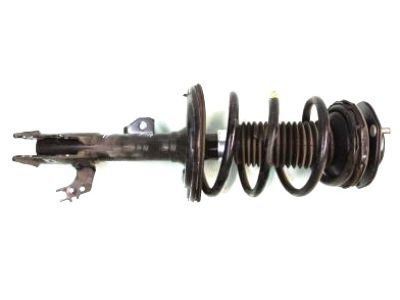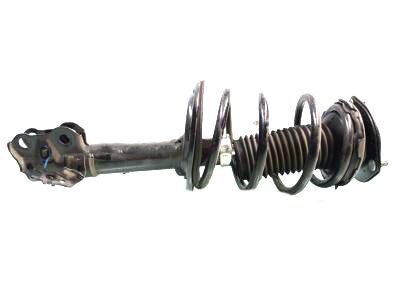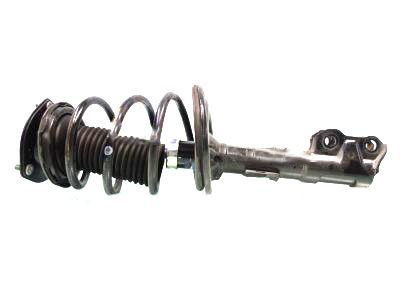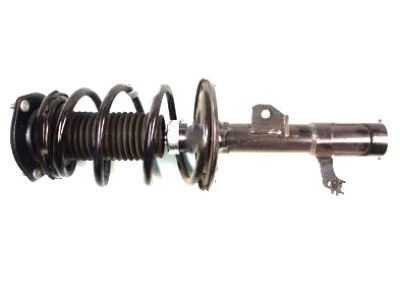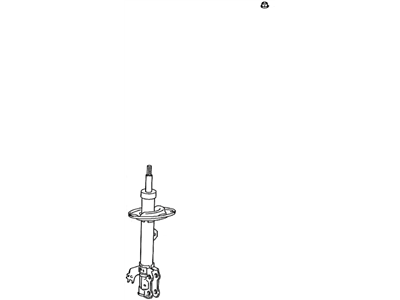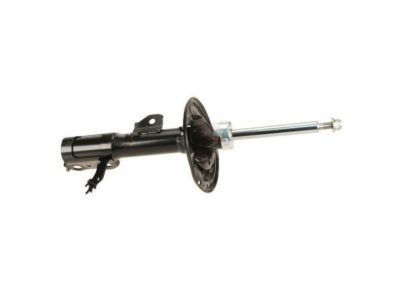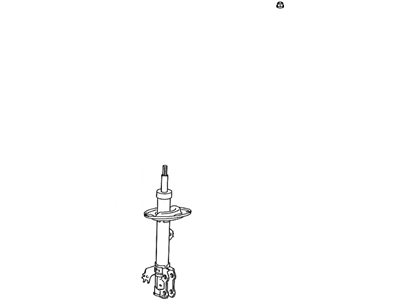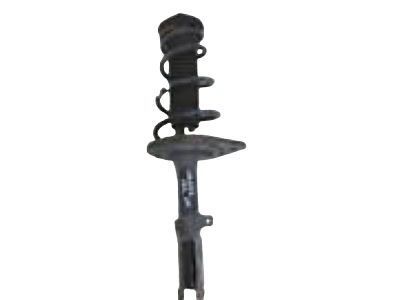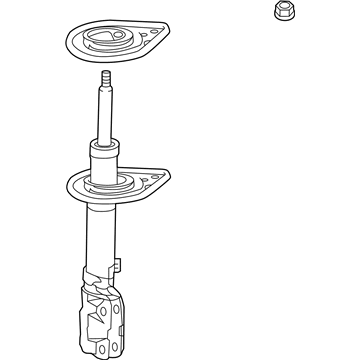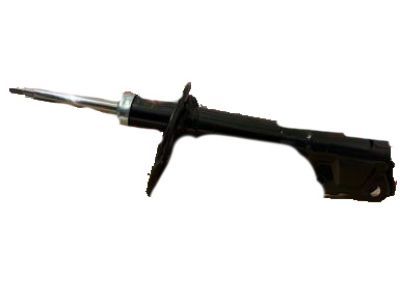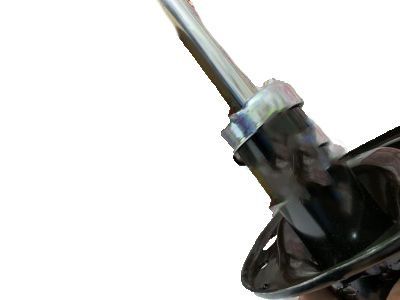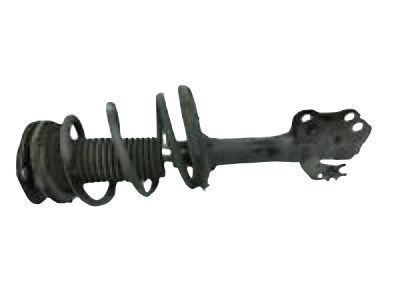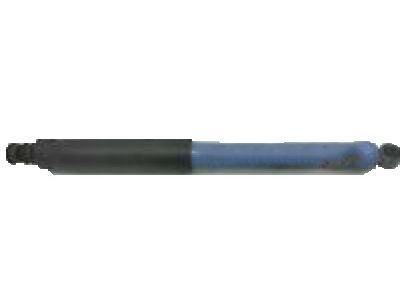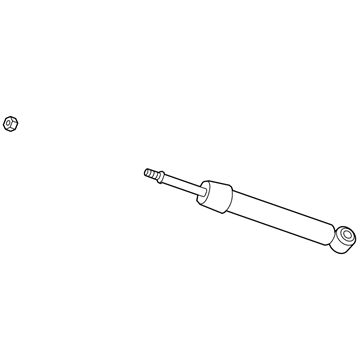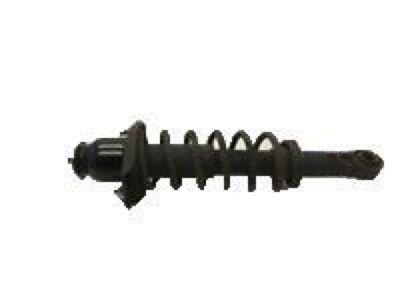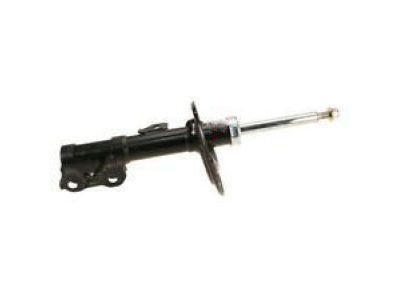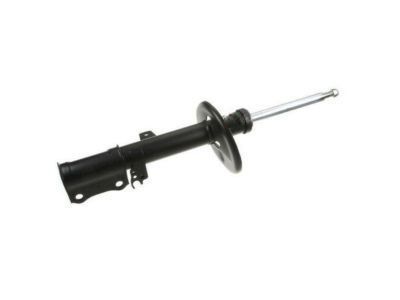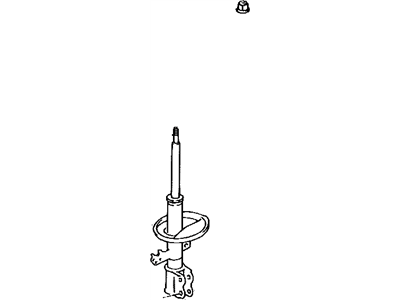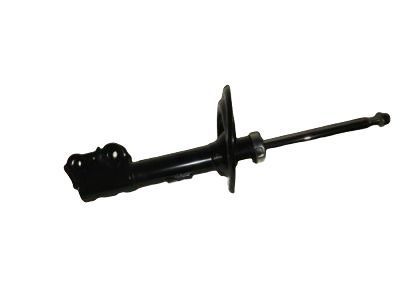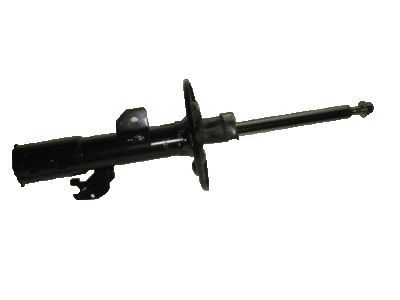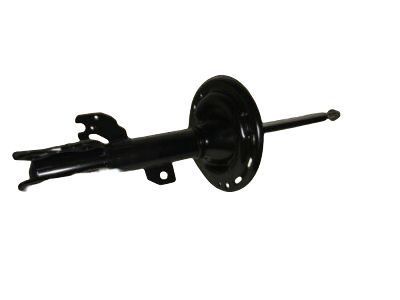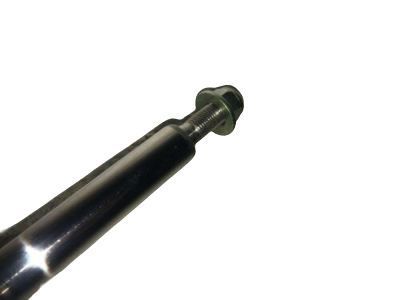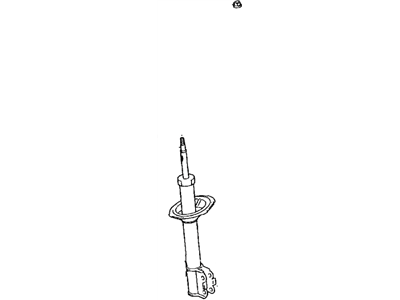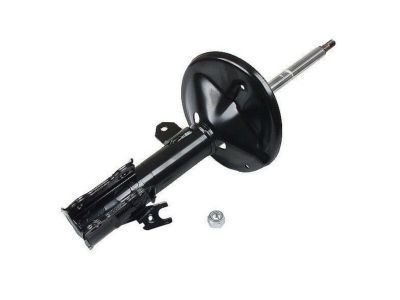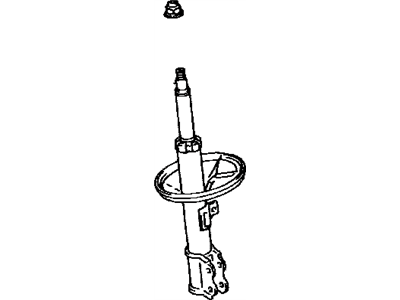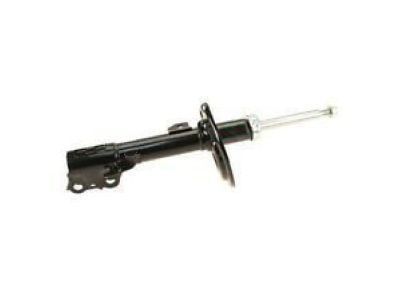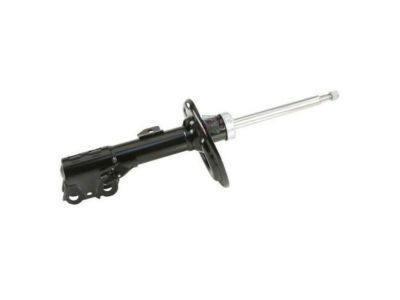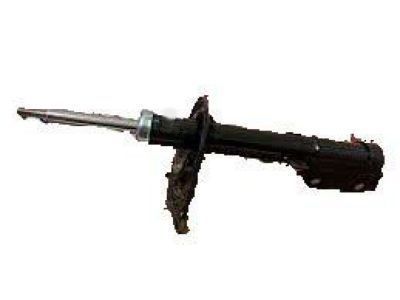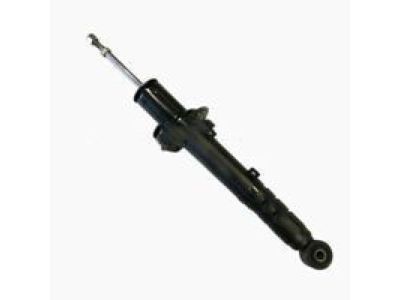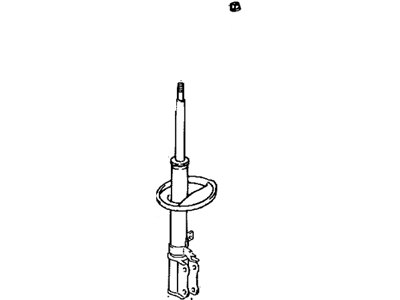

My Garage
My Account
Cart
Genuine Toyota Avalon Shock Absorber
Suspension Shock Absorber- Select Vehicle by Model
- Select Vehicle by VIN
Select Vehicle by Model
orMake
Model
Year
Select Vehicle by VIN
For the most accurate results, select vehicle by your VIN (Vehicle Identification Number).
97 Shock Absorbers found
Toyota Avalon Shock Absorber Assembly Front Right
Part Number: 48510-09898$115.86 MSRP: $163.32You Save: $47.46 (30%)Ships in 1-3 Business DaysToyota Avalon Shock Absorber Assembly Front Left
Part Number: 48520-09894$118.63 MSRP: $168.65You Save: $50.02 (30%)Ships in 1-3 Business DaysToyota Avalon Shock Absorber Assembly Rear Left
Part Number: 48540-80581$158.76 MSRP: $225.70You Save: $66.94 (30%)Ships in 1-2 Business DaysToyota Avalon Shock Absorber Assembly Rear Right
Part Number: 48530-80581$149.40 MSRP: $212.40You Save: $63.00 (30%)Ships in 1-3 Business DaysToyota Avalon Shock Absorber Assembly Front Left
Part Number: 48520-8Z156$118.63 MSRP: $168.65You Save: $50.02 (30%)Ships in 1-3 Business DaysToyota Avalon Shock ABSORBER Set
Part Number: 48530-8Z054$48.66 MSRP: $68.01You Save: $19.35 (29%)Ships in 1-3 Business DaysToyota Avalon Shock Absorber Assembly Front Right
Part Number: 48510-8Z299$134.30 MSRP: $190.93You Save: $56.63 (30%)Ships in 1-3 Business DaysToyota Avalon Shock Absorber Assembly Front Left
Part Number: 48520-09895$117.99 MSRP: $166.32You Save: $48.33 (30%)Ships in 1-2 Business DaysToyota Avalon Shock Absorber Assembly Rear Left
Part Number: 48540-A9070$161.57 MSRP: $229.69You Save: $68.12 (30%)Ships in 1-3 Business DaysToyota Avalon Shock Absorber Assembly Front Left
Part Number: 48520-09G90$125.41 MSRP: $178.29You Save: $52.88 (30%)Ships in 1-2 Business DaysToyota Avalon Shock Absorber Assembly Front Right
Part Number: 48510-A9100$125.65 MSRP: $178.63You Save: $52.98 (30%)Ships in 1-3 Business DaysToyota Avalon Shock Absorber Assembly Front Left
Part Number: 48520-8Z157$118.63 MSRP: $168.65You Save: $50.02 (30%)Ships in 1-3 Business DaysToyota Avalon Shock Absorber Assembly Front Left
Part Number: 48520-09D40$137.23 MSRP: $195.10You Save: $57.87 (30%)Ships in 1-3 Business DaysToyota Avalon Shock Absorber Assembly Rear Left
Part Number: 48540-80582$150.80 MSRP: $214.39You Save: $63.59 (30%)Ships in 1-3 Business DaysToyota Avalon Shock Absorber Assembly Front Left
Part Number: 48520-09D50$134.42 MSRP: $191.11You Save: $56.69 (30%)Ships in 1-3 Business DaysToyota Avalon Shock Absorber Assembly Front Right
Part Number: 48510-8Z300$134.30 MSRP: $190.93You Save: $56.63 (30%)Ships in 1-3 Business DaysToyota Avalon Shock Absorber Assembly Rear Right
Part Number: 48530-80529$151.04 MSRP: $214.72You Save: $63.68 (30%)Ships in 1-3 Business DaysToyota Avalon Shock Absorber Assembly Rear Right
Part Number: 48530-80530$137.23 MSRP: $195.10You Save: $57.87 (30%)Ships in 1-3 Business DaysToyota Avalon Shock Absorber Assembly Rear Right
Part Number: 48530-09898$149.40 MSRP: $212.40You Save: $63.00 (30%)Ships in 1-2 Business DaysToyota Avalon Shock Absorber Assembly Rear Right
Part Number: 48530-09897$149.40 MSRP: $212.40You Save: $63.00 (30%)Ships in 1-3 Business Days
| Page 1 of 5 |Next >
1-20 of 97 Results
Toyota Avalon Shock Absorber
The Shock Absorber in Toyota Avalon acquires the main function of offering roads stability and comfort by reducing shock-vibration frequencies. This mechanical device translates post impact kinetic energy into heat, in order to reduce the effects of rugged country. Shock absorbers function in interaction with springs to inhibit excessive movement of the suspension, which is done hydraulically using a piston. Through the years, several styles of shock absorbers have been used on the Avalon, including twin tube and mono tube styles. Twin-tube shocks are standard and can be made of gas for increased resilience, while mono-tube benefits from better heat exchange and is suitable for four way mounting. Other new age technologies like Position Sensitive Damping systems or magnetorheological dampers compliment the suspension system and helps to make tune with the road conditions to provide optimum damping comfort and control. They note that maintenance and inspection of the shock absorber should be done frequently so that the vehicle's safety and optimal performance can be guaranteed.
If you are in demand for superior quality and affordable OEM Toyota Avalon Shock Absorber, then shop with us! We own a wide range of the reduced-priced genuine Toyota Avalon Shock Absorber. You can purchase in confidence as all parts come with a manufacturer's warranty. Any issues with our products? No need to worry as we have a hassle-free return policy to guide you every step of the way.
Toyota Avalon Shock Absorber Parts Questions & Experts Answers
- Q: How to Remove and Install a Rear Shock Absorber on 1997 through 2001 Toyota Avalon?A:Remove the rear seat and package tray trim panel. Loosen the rear wheel lug nuts, raise the rear of the vehicle and support it securely on jackstands. Remove the wheel. On models equipped with ABS, remove the flexible hose and ABS speed sensor from the shock absorber. Detach the brake hose from the strut. If the vehicle is equipped with ABS, detach the ABS sensor wire from the strut. On models equipped with electronic modulated suspension, remove clip and clamp and disconnect the shock absorber wiring harness. Disconnect the stabilizer bar link from the strut. Support the axle carrier with a floor jack. Loosen the strut-to-axle carrier bolt nuts. Remove the three upper strut-to-body mounting nuts. On models equipped with electronic modulated suspension, loosen but do not remove the damper shaft (center) nut, and will require a special socket. Remove the assembly out from the fenderwell. Lower the axle carrier with the jack and remove the two strut-to-axle carrier bolts. Remove the strut assembly. Maneuver the assembly up into the fenderwell and insert the mounting studs through the holes in the body. Install the nuts, but don't tighten them yet. Push the axle carrier into the strut lower bracket and install the bolts and nuts, tightening them to the torque. Connect the stabilizer bar link to the strut bracket. Attach the brake hose bracket to the strut. If the vehicle is equipped with ABS, attach the ABS wire to the strut. Install the wheel and lug nuts, lower the vehicle and tighten the lug nuts to the torque. Tighten the three strut upper mounting nuts to the torque. If you're working on a model equipped with electronic modulated suspension and the strut has been disassembled, tighten the strut center nut to the torque, using a setup like the one in illustration 3.14. Connect the electrical connector. Install the package tray trim and seat.
Related Toyota Avalon Parts
Browse by Year
2022 Shock Absorber 2021 Shock Absorber 2020 Shock Absorber 2019 Shock Absorber 2018 Shock Absorber 2017 Shock Absorber 2016 Shock Absorber 2015 Shock Absorber 2014 Shock Absorber 2013 Shock Absorber 2012 Shock Absorber 2011 Shock Absorber 2010 Shock Absorber 2009 Shock Absorber 2008 Shock Absorber 2007 Shock Absorber 2006 Shock Absorber 2005 Shock Absorber 2004 Shock Absorber 2003 Shock Absorber 2002 Shock Absorber 2001 Shock Absorber 2000 Shock Absorber 1999 Shock Absorber 1998 Shock Absorber 1997 Shock Absorber 1996 Shock Absorber 1995 Shock Absorber
